Barbets
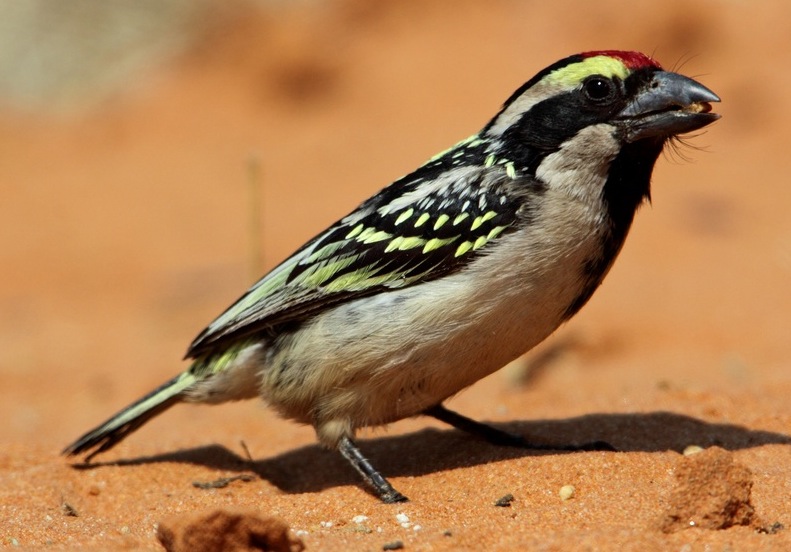
These rather dumpy birds, with powerful yet short bills are unusual, in that members of the group are found both in Africa and Asia, as well as parts of Central and South America. They also have hair-like plumage at the base of their bills, with the name “barbet” being a corruption of the German word for “beard”. Barbets are grouped in the same family as toucans.
Housing
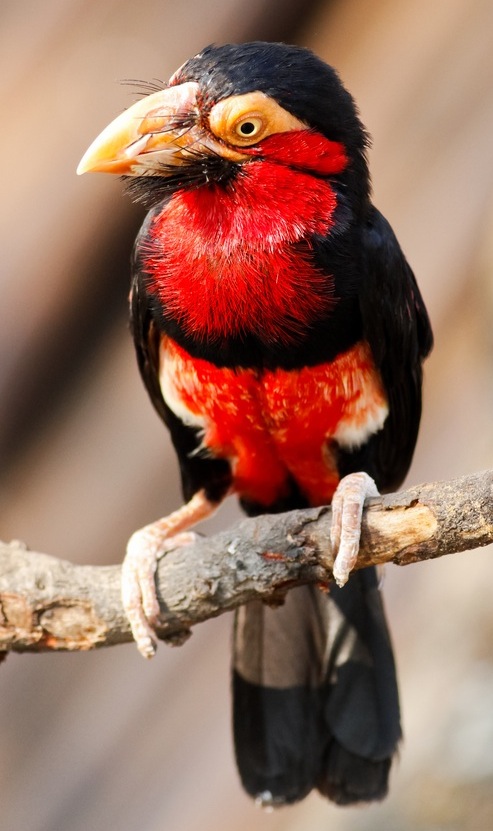
A stout aviary is important, preferably incorporating some solidly-fixed wooden logs, which the birds can attack in a similar way to woodpeckers with their powerful bills, creating roosting and nesting hollows. Most barbets are not hardy, even when acclimatised, and so will require heated winter-time accommodation.
Feeding preferences
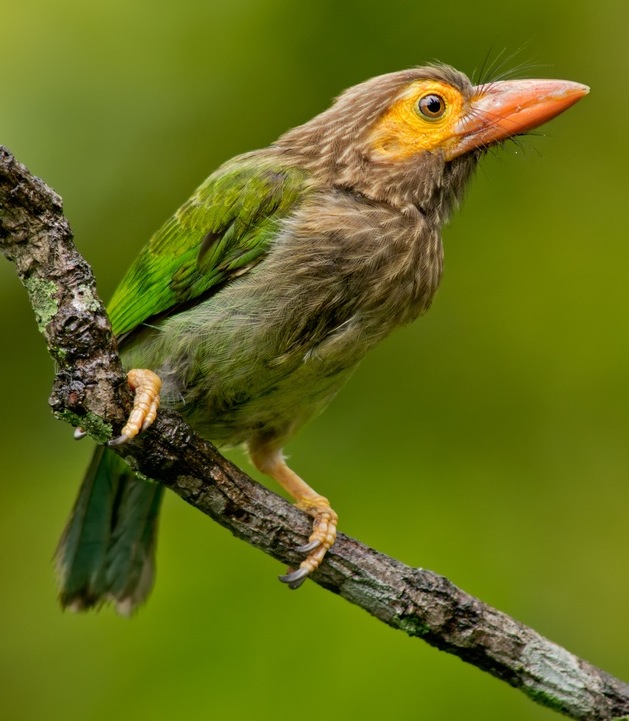
Barbets from forested areas tend to be more frugivorous than those occurring in the open countryside of the African savanna. Diced fruit such as apple, whole grapes and individual segments of pomegranate, which are useful over the winter period, when other fruit is in short supply can form the basis of their food mix.
This needs to be augmented with either a low iron softfood, or similar pellets. Soaking these in water just prior to adding them to the food mix will improve their palatability. Various invertebrates, including crickets, mealworms and waxmoth larvae can all be offered as well.
Breeding
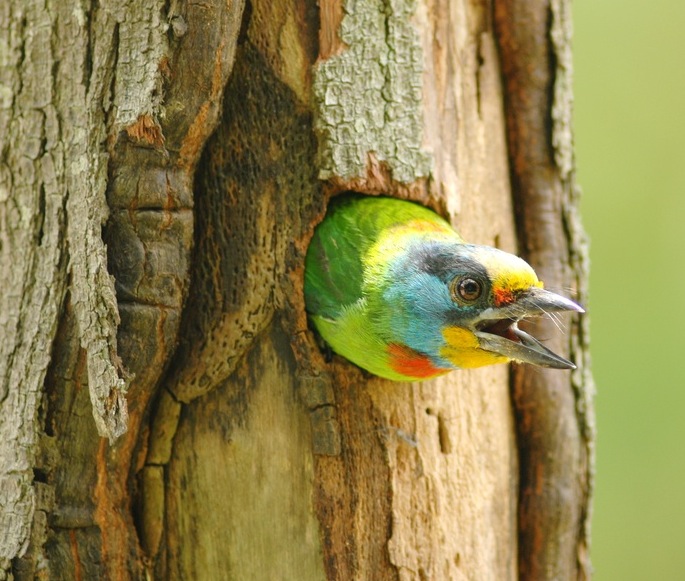
Being hole-nesters, barbets will prefer a secluded nesting cavity. Some species, such as D’Arnaud’s (Trachyphonus darnaudii) may seek to tunnel into the aviary floor, which can cause problems if this becomes water-logged in heavy rain, or the tunnel collapses on them. Providing a natural log will allow a pair to create their own nesting chamber, but nest inspections are likely to be difficult.
It may therefore be better to disguise the entrance hole to a nestbox with cork bark, and line the floor area with coarse wood chips, as sold commercially for reptile bedding. Many species cannot be sexed on the basis of obvious differences in plumage, but as a guide, the bills of hens may not be quite as robust as those of cock birds.
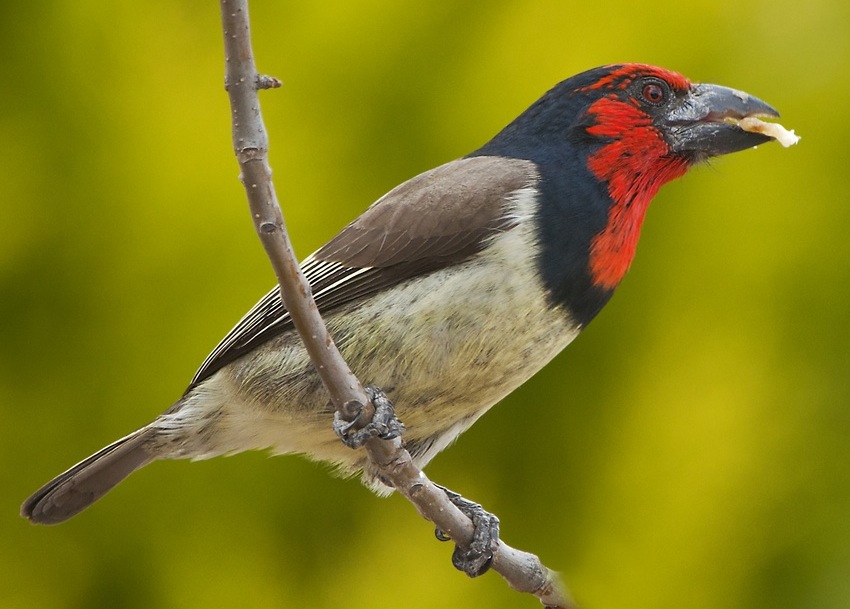
Sociability
Some barbets may agree together, if kept on a colony basis in a large, well-planted flight, but especially at breeding time, pairs are frequently quarrelsome. The great barbet (Megalaima virens), a relatively hardy species from China, is especially aggressive by nature.
Health watch
The more frugivorous barbets in particular are at risk from iron storage disease. Avoid this risk by using low iron softfoods, and excessive use of soaked dry fruits.
Good to start with: Bearded barbet (Lybius dubius), an African species, as shown - right above. Hens in this case can be recognised by the black spotted patterning on their flanks.
Clutch size: 2-4 eggs.
Incubation and fledging periods: About 16-19 days and around 49 days respectively
Enthusiast’s guide
Toucans, Barbets and Honeyguides: Ramphastidae, Capitonidae and Indicatoridae by Lester Short and Jennifer Horne, Oxford University Press.